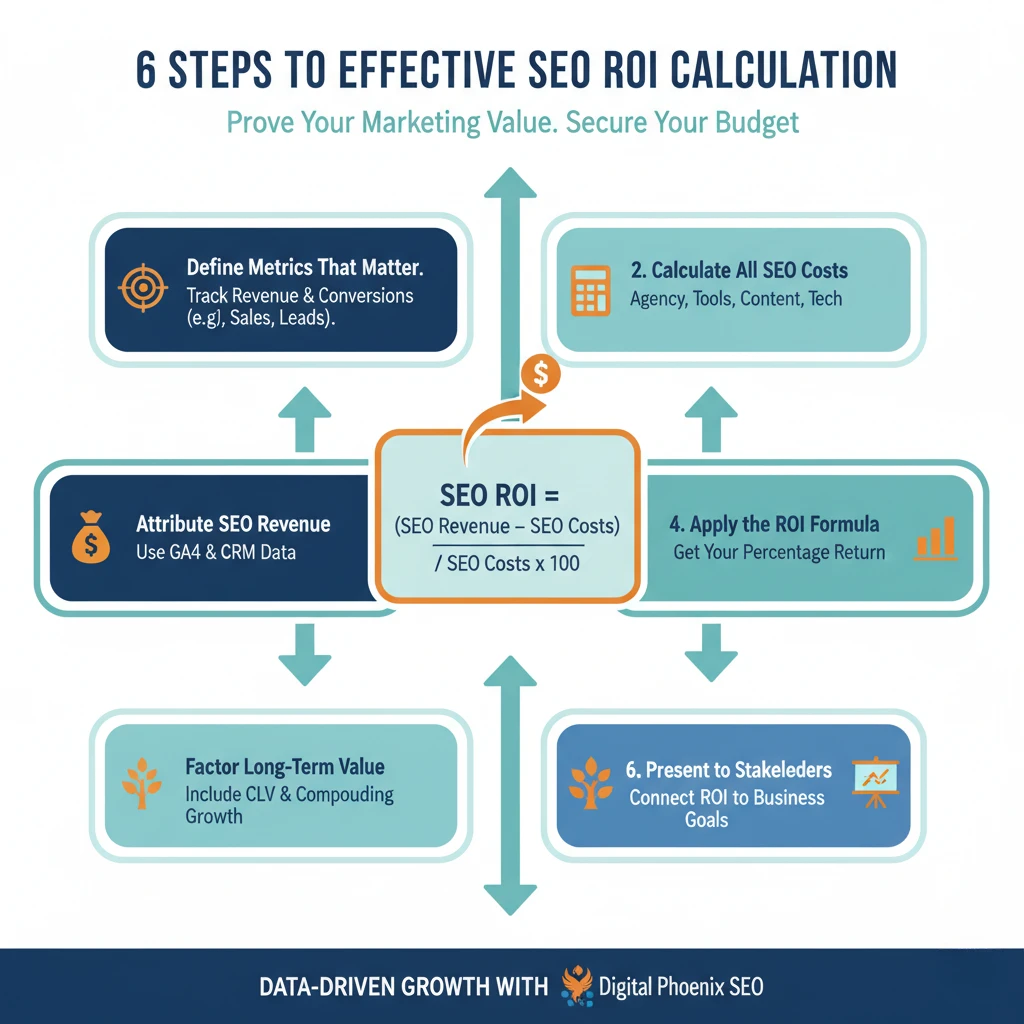Measuring the return on investment (ROI) from SEO is one of the most effective ways to justify marketing spend and prove the value of organic growth. Unlike paid ads, SEO results can take time, but when executed properly, they often deliver compounding returns. Understanding SEO ROI calculation ensures that decision-makers see how every dollar invested leads to tangible results. Let’s break down how to do it.
What Is SEO ROI Calculation?
SEO ROI calculation refers to the process of measuring the profitability of your SEO campaigns relative to the costs involved. Essentially, it answers the question: Are we making more money from SEO than we’re spending on it? This is vital for marketers who need to demonstrate value to stakeholders and secure budget approval.
For example, imagine a business investing $5,000 a month into SEO. If organic traffic leads to $20,000 in sales attributed to that investment, the ROI is significant. Without a clear calculation, however, executives may question whether SEO is paying off compared to other channels like paid search or social media ads.
Think of SEO ROI as similar to evaluating a gym membership. You invest money monthly, but unless you measure progress—such as strength gained, weight lost, or energy improved—you may not recognize its worth. ROI gives measurable proof of growth.
Step 1: Define the Metrics That Matter
Before you can perform an SEO ROI calculation, you must decide which metrics align with your business goals. Commonly measured indicators include:
- Organic traffic growth
- Conversion rates (form fills, purchases, downloads)
- Average order value (AOV)
- Customer lifetime value (CLV)
- Revenue from organic leads
For instance, an e-commerce store may focus on organic product sales, while a B2B SaaS company may prioritize lead form completions. Tailoring the measurement to your business ensures the ROI reflects true success.
A bakery in Austin, for example, may find that improving its SEO leads to a 20% increase in online orders. That’s not just more website traffic—it’s measurable revenue.
Step 2: Calculate the Costs of SEO
The next part of SEO ROI calculation involves tracking your costs. These include:
- Agency or consultant fees
- In-house SEO salaries or partial allocations
- Tools and software (Ahrefs, SEMrush, Screaming Frog, etc.)
- Content creation expenses
- Technical improvements (e.g., site speed optimization)
If your business spends $8,000 on SEO activities in a quarter, that number becomes the denominator in your ROI formula. Transparency about costs makes the ROI discussion more credible, especially with executives who scrutinize budgets.
Step 3: Track Revenue from SEO
Revenue attribution is essential to SEO ROI calculation. You must connect organic performance to business outcomes. Methods include:
- Google Analytics and GA4: Track organic traffic conversions.
- CRM Systems: Attribute sales leads to organic channels.
- E-commerce Tracking: Map product sales directly to organic sessions.
For example, an online clothing retailer might see 5,000 new organic visits per month, with 2% converting at an average order value of $75. That equals $7,500 in monthly revenue directly tied to SEO.
Step 4: Apply the SEO ROI Formula
The classic formula for SEO ROI calculation is:
SEO ROI = (SEO Revenue – SEO Costs) / SEO Costs x 100
Example: If your SEO generates $25,000 in revenue over a quarter and you spent $10,000, then:
($25,000 – $10,000) / $10,000 x 100 = 150% ROI
This simple formula provides a percentage return that’s easy for decision-makers to grasp. The higher the ROI, the more justified your budget.
Step 5: Factor in Long-Term Value
Unlike paid ads that stop generating traffic once spend ends, SEO compounds over time. Factoring in customer lifetime value (CLV) makes SEO ROI calculation even more compelling.
For instance, if a B2B client acquired through organic search signs a $50,000 annual contract, that single conversion may offset several months of SEO investment. Including long-term gains demonstrates why SEO often outperforms other marketing channels.
Comparatively, think of SEO like planting a tree. Paid ads are like buying fruit at the market—it feeds you quickly but stops when the money runs out. SEO, however, grows stronger over time, producing fruit year after year.
Step 6: Presenting ROI to Stakeholders
Numbers alone don’t always persuade stakeholders. Effective communication is critical. Present ROI in a way that links SEO outcomes to broader business goals, such as revenue growth, cost savings, or market share.
Instead of only stating, “We achieved a 120% ROI,” frame it as: “For every $1 we spent on SEO, we generated $2.20 in revenue. This positions SEO as one of our highest-performing marketing channels.” Contextualizing results makes the SEO ROI calculation relatable and persuasive.
Real-World Case Example
A mid-sized SaaS company invested $12,000 over three months into SEO, focusing on technical optimization, content clusters, and backlink outreach. As a result, they increased organic demo sign-ups by 60%, worth $45,000 in new annual recurring revenue. After subtracting costs, their ROI exceeded 275%.
Without clear ROI tracking, leadership might have cut SEO in favor of paid campaigns. Instead, SEO ROI calculation proved the channel’s profitability and secured a larger budget for the next quarter.
Common Pitfalls in SEO ROI Calculation
While powerful, ROI tracking can be misleading if not approached carefully. Common mistakes include:
- Failing to account for all costs, such as content creation or technical fixes.
- Double-counting conversions across channels (e.g., paid vs. organic).
- Ignoring attribution windows, where SEO efforts might show delayed results.
Avoiding these pitfalls ensures your SEO ROI calculation is accurate and credible.
Why SEO ROI Matters for Your Budget
In today’s competitive landscape, executives demand data-driven decisions. A clear SEO ROI calculation transforms SEO from a “nice-to-have” into a strategic growth engine. By showing measurable outcomes, you not only defend your current budget but also position SEO for expanded investment.
Think of it this way: If you can show that every dollar in SEO produces three dollars in revenue, cutting SEO would be like throwing away free money.
Final Thoughts
Performing an accurate SEO ROI calculation gives you the numbers needed to justify your marketing budget. By defining metrics, tracking revenue, factoring costs, and applying the ROI formula, businesses can clearly see the profitability of organic search. More importantly, proving ROI secures trust and ensures ongoing investment in sustainable growth.
Ready to Maximize Your SEO ROI?
At Digital Phoenix SEO, we specialize in transparent, data-driven strategies that prove real results. Our team helps businesses track, calculate, and grow their SEO ROI with precision. Whether you’re a local business or a global brand, we can show you the impact of every optimization.
Book a free strategy call today and discover how we can elevate your SEO ROI and unlock long-term growth.




